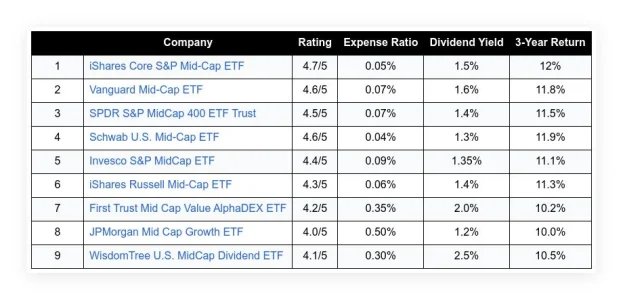Would you like to escape the 9-to-5 grind and live life on your own terms? Better yet, have you considered retiring in your 30s or 40s?
You might think this is too good to be true. However, many people who follow the FIRE movement strive to make it a reality. In fact, according to a survey from Empower, 67% of Americans want financial independence.
If you’re unfamiliar with FIRE, which stands for Financial Independence Retire Early, it is a lifestyle movement that challenges the idea that you need to work until you’re 65. One can achieve financial independence much earlier by saving extreme amounts and investing diligently.
Interested? Then you’re in luck. In this blog, we explore the core principles, strategies, and considerations of FIRE and address some common questions about the movement and its different paths.
You will want to watch this fantastic video from ET Money
Table of Contents
ToggleWhat is the FIRE Movement?
Taking inspiration from Vicki Robins and Joe Dominguez’s 1992 book “Your Money or Your Life,” the FIRE movement seeks to promote independence, frugality, and self-control. According to the movement, followers should achieve greater satisfaction in life outside of the traditional 9-to-5 workweek.
Individuals like Pete Adeney, also known as Mr. Money Mustache, have led the way by retiring from their careers in their 30s through disciplined saving and investing.
In order to join the FIRE movement, what exactly do you need to do? It all boils down to a few simple principles:
Typically, followers save between 50 and 70 percent of their income, live frugally, and invest their savings in low-cost index funds.
However, the FIRE movement isn’t just about early retirement; it’s about taking back control of your life. Imagine being free to pursue your passions, travel the world, or just spend time with family and friends. By prioritizing financial independence, you can achieve this goal.
Understanding the FIRE Math
It’s essential to understand the math behind FIRE before going any further.
A FIRE calculation is based on a “Safe Withdrawal Rate.” This is the percentage of your nest egg you can withdraw annually without depleting it. Retirees should generally withdraw 4% of their nest eggs in their first year of retirement, adjusted for inflation each year after that.
However, this is a guideline. No matter what age you retire, you should consider the following factors:
- What kind of income do you need in early retirement to maintain your lifestyle?
- When do you plan to retire?
- What’s your life expectancy?
- Investment returns.
- Cost of health care.
The rule, however, has some limitations, especially in countries with different economic conditions like India.
Strategies to Fuel Your FIRE Journey
To achieve FIRE, you must be disciplined and dedicated. Additionally, it involves developing skills and side hustles to maximize income while adopting frugal living habits to minimize expenses. Furthermore, passive income streams, such as dividends, rental income, or other forms, play an important role in sustaining early retirement.
The following are some additional strategies used by FIRE advocates:
- High savings rate. Most people aim for a savings rate of 50% or more of their income. This, however, requires significant budgeting and reducing unnecessary expenses.
- Early and aggressive investing. You can grow your money exponentially by investing a substantial portion of your savings. For long-term growth, FIRE enthusiasts often prefer index funds with low costs. In addition, exploring other investment options tailored to individual goals and risk tolerances is important.
- Multiple income streams. Diversifying your income through side hustles, rental properties, and online businesses can accelerate your path to financial independence.
- Early debt repayment. If you have high-interest debts like credit cards, you may find it difficult to progress financially. Paying them off aggressively is your top priority.
Different Paths to FIRE
A wide variety of FIRE lifestyles and risk tolerances are available within the movement. Some of the most popular ones are:
- Lean FIRE. By lowering the nest egg, a frugal retirement lifestyle can be achieved. Those who advocate minimalism and simple living tend to find joy in the simple things in life.
- Fat FIRE. As a result, retirees can live a more luxurious lifestyle in retirement, which requires a much larger nest egg. In addition, it often involves higher-paying careers and more risky investments.
- Coast FIRE. By a certain age, it aims to save enough to maintain financial stability until retirement. Some continue working part-time to qualify for health insurance or Social Security benefits.
- Barista FIRE. To accomplish this, you must accumulate enough savings early on. Often, this is done through part-time work, such as barista jobs, while pursuing higher education or training.
The Allure of FIRE: Benefits of Early Retirement
A big part of the appeal of FIRE is its promise of freedom and flexibility. In recent years, FIRE has become increasingly attractive to millennials and Gen Zers disillusioned with traditional career paths. After all, the goal of FIRE followers is to live life according to their own terms, challenging societal norms and embracing unconventional lifestyles.
FIRE also offers the following advantages:
- Reduced stress. When you are financially independent, you are no longer forced to stay in a job you dislike just to make ends meet. The result can be significantly reduced stress levels and an improved quality of life overall.
- More time for family and friends. By retiring early, you can spend more time with family and friends, building stronger bonds and creating lasting memories.
- Passionately pursue what you love. You can finally explore neglected passions and creative endeavors or learn a new skill.
- Improved health. Early retirement can lead to a healthier lifestyle through reduced stress and making healthy habits a priority.
However, there are some challenges and criticisms associated with FIRE. For some people, financial independence may not be a realistic possibility. Before beginning the FIRE journey, you should carefully consider your circumstances and goals.
[Related: Beyond Finances: What Nobody Tells You About the First Six Months of Retirement]
FAQs
What is the FIRE movement?
This acronym stands for Financial Independence, Retire Early. Using this strategy, you can retire much earlier than at 65 because you’ll be financially independent. This gives you the flexibility to pursue your passions and control your time.
Is FIRE just about early retirement?
Not quite.
Although early retirement is a common goal, FIRE is more about gaining financial freedom. You can work part-time, pursue hobbies full-time, or even travel the world while doing this.
How does FIRE work?
The FIRE movement advocates saving a high percentage of income (often 50% or more) and investing it strategically. In addition to living frugally, they prioritize needs over wants to minimize expenses. To achieve this goal, you should build a nest egg that generates enough passive income to support you and your family.
Is FIRE only for high earners?
No!
With the right approach, anyone can pursue FIRE. A higher income helps, but you must save aggressively, budget effectively, and invest wisely.
Does FIRE mean extreme frugality?
It’s all about finding the right balance when it comes to FIRE. Despite the importance of saving, you shouldn’t sacrifice your overall well-being. A FIRE follower often prioritizes experiences over material possessions and focuses on maximizing their spending.
Image Credit: Maris Rhamdani; Pexels
















